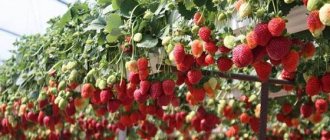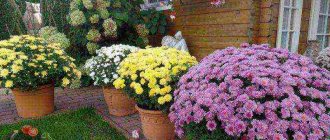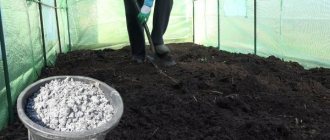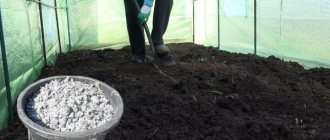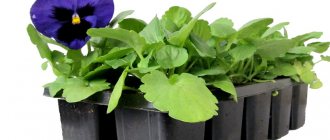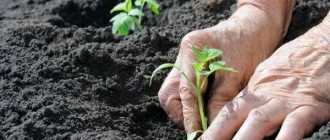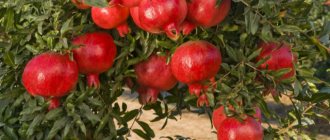Remontant varieties of strawberries are in demand among all lovers of this plant.
This is due to the ability to obtain several harvests per year from one bush. The first harvest in this case will ripen in July. The largest harvest can be obtained at the end of summer - it is at this time that from 60 to 90% of the berries fall. Such strawberries are easily grown on the balcony, in pots and can, with proper care, bear fruit all year round at home. Dear readers! For you, we have created communities on social networks in which useful articles and interesting ideas are published several times a day! Subscribe and receive useful content in a convenient format!
What are remontant strawberries and how are they different from others?
Remontability is the ability of some plants to bloom and produce crops several times a year. After the first ripening of the fruits, flower buds are formed again. Such bushes often have a weaker leaf system, but the berries are very large.
Peculiarities! If the second harvest is more important, it is worth sacrificing the first. To do this, it is enough to trim the first flower stalks. This technique will preserve the bush’s ability to produce abundant fruit at the end of summer.
Remontant strawberries are grown in greenhouses, and even on the balcony. This way you can get abundant and constant fruiting even from 2 - 3 bushes growing in pots.
Features of remontant garden strawberries
- Fruits are set not only on mother plants, but also on young plants;
- Most varieties are large-fruited (all fruits are from 50 to 100 grams);
- Rapid aging of bushes;
- Some large-fruited varieties may have smaller berries next year.
To ensure constant fruiting throughout the season, it is worth combining remontant and regular varieties.
Types of remontant strawberries
The repairability of garden strawberries directly depends on the time when buds are laid on the bushes. More precisely, on the length of daylight hours. In most varieties, buds are laid in the fall. At this time, daylight hours are shortened. In remontant varieties, flower buds are formed regardless of the length of daylight hours. In the same year, by the end of summer, the bushes bear fruit for the second time.
Reference! Remontant strawberries form flower buds even during neutral daylight hours. These are the so-called NSD varieties.
For remontant varieties, the stages of care should be calculated for a modified growing season.
Long daylight hours
Remontant long-day strawberries lay flower buds when the daylight hours are 16 hours.
This occurs in mid-May - early June. At this time, the formation of the ovary occurs simultaneously.
This is the kind of strawberry that can produce 2 harvests. The first fruiting occurs in June, and the second at the end of summer.
Attention! DSD varieties during the second harvest are capable of producing up to 90% of the annual harvest. This is possible if the bushes are mature and strong.
It is worth remembering that with each subsequent season, plant productivity decreases . To do this, you will need to frequently update the bushes to be young and strong.
Short daylight hours
These are varieties in which flower buds are formed in the fall. This allows you to harvest early fruits as early as June. It is easy to propagate because mature bushes have many tendrils. But, as a rule, they are less common than remontant varieties.
With and without mustaches
According to the method of propagation, remontant strawberries are divided into:
- With a mustache;
- Without mustache (or mustacheless varieties).
The most convenient way to propagate strawberries is with a mustache. It begins to produce a harvest within a few months after planting. Beardless strawberries are less common because they can reproduce exclusively by seeds.
Peculiarities! Bearded varieties are more resistant to diseases and insects. They look neat in the garden because they don’t grow.
Planting planting material
In accordance with the chosen scheme, recesses are made. The depth of the holes is about 12-15 cm and depends on the size of the bush. Mature seedlings, with a developed root system, are planted in deeper holes. Experienced gardeners recommend forming a small mound in the hole to spread the roots of the seedling on it.
You can sprinkle a special powder around the root system to promote rapid rooting. Next, the seedling is sprinkled with earth and compacted a little. The root collar should be level with the ground or slightly higher. The empty hole and the planted bush are watered a little with water.
Landing
Features of growing remontant varieties:
- For planting, it is best to choose open, sunny areas;
- Fertile, well-loosened soil.
It is grown by pre-sowing seedlings. This is done in February or early March. In May, after the risk of late frosts disappears, the stronger seedlings can be planted in open ground.
Peculiarities! To get a good harvest, the land on the site needs to be prepared in the fall. Mineral and organic fertilizers are added to the soil and then dug deep.
Fertilizers for plants
To get a good harvest, it is important to fertilize strawberries in a timely manner.
Mineral mixtures
At the beginning of spring, you need to feed the plants with nitrogen, and during the flowering period and after the fruiting cycle you will need potassium. Phosphorus can be carried into the soil during the formation of beds. To do this, you will need superphosphate in the amount of 20 g per 1 m2. At the end of May it is recommended to apply urea. To do this, you need to dissolve 1-2 g of the substance in a bucket of water. This is enough for 1m2.
Organic fertilizers
Such fertilizers are applied during the second fruiting, in June. The optimal fertilizer is mullein diluted with water in a ratio of 1:10. You can also use bird droppings. In this case the ratio is 1:15. Additionally, you can use complex fertilizers.
Propagation of remontant strawberries
To preserve the beneficial properties of remontant strawberry varieties for as long as possible, propagation by mustache is best suited. But this is not always possible, since some varieties do not have a mustache at all. The only way to get young plants is to grow seedlings.
Seeds
This is the most difficult way to grow remontant strawberries.
But it allows you to get a large number of young and healthy bushes. In the case of alpine, or beardless garden strawberries, this is practically the only method of propagation.
To propagate by seeds, it is worth collecting the largest and sweetest berries of the variety you like. From them you can get seeds, which are planted to produce seedlings in late February or early March.
Usami
Propagation by tendrils produces many young plants throughout the season.
This is especially important for remontant varieties that quickly age and require replacement.
To do this, you need to carefully observe the appearance of sockets. Only 2 - 3 of them are left on the mustache, as close as possible to the mother bush.
Attention! Weak tendrils need to be removed promptly, as they weaken an actively fruiting plant.
In other ways
There is another method of vegetative propagation of remontant strawberries. This could be dividing bushes. It is used only when there is an urgent need to obtain seed. For propagation, only strong and healthy bushes can be used.
Attention! This method of propagation is not suitable for all remontant varieties.
FAQ
It happens that something wrong happens to a plant, but it is difficult to understand what exactly. It seemed like they followed the rules of care, but problems still appeared. Such problems often include issues related to flowering, fruiting and general health.
Pest and disease control
Such a tasty berry is as sweet for pests as it is for people. Unfortunately, diseases also do not bypass this plant.
Diseases that most often affect remontant strawberries include:
- gray rot: in the presence of this disease, the berries are covered with gray rot. This can be caused by excessive humidity and dampness. Gray rot can greatly reduce the yield of strawberries, and to prevent this, it is necessary to spray with fungicides according to a clear schedule;
- fusarium: this disease affects the root system, and it is almost impossible to identify it immediately. This can be seen by the appearance of the plant, it fades or turns brown, the foliage becomes covered with spots. Fusarium can be caused by close placement of beds, unfavorable soil, and so on. To combat this disease, it is necessary to spray the plant with chemicals and monitor the condition of the bed and soil.
The main pests of strawberries include:
- beetle larvae: these pests devour the root system of strawberries, and if you do not act in time, you can say goodbye to all the seedlings. To prevent this, it is necessary to carry out prevention in the form of watering the plant with a solution of water and onion peels;
- birds: they also feast on the berries of this plant. To stop them, they often use Christmas tree rain or simply cover the seedlings with a net;
- weevil: this enemy attacks the buds and flowers of strawberries themselves. To combat it, only chemicals are used;
- slugs: untimely control of these pests can lead to loss of the entire area. To get rid of them, sprinkle the area with potassium salt or superphosphate, otherwise you can use ready-made chemicals.
Why doesn't it bloom or bear fruit?
There are many reasons why strawberries do not bloom. This may be incorrect planting depth, lack or oversaturation of fertilizers, or the work of pests and disease symptoms. The reasons for the lack of flowering also include lack of light and simply the first year of growth. Fruiting directly depends on how flowering occurs. It happens that there is no fruiting due to insufficient pollination of flowers, or maybe frost and pests have a negative impact on this.
Care
Abundant fruiting twice a season greatly exhausts the bushes. Because of this, plants need especially careful care. It needs to start in early spring, after the snow has melted. You need to remove the old mulch and carefully inspect the beds. If there are exposed fibrous roots, they need to be spudded. Then loosen the soil in the area and mulch it with small sawdust.
Watering
Garden strawberries need abundant watering throughout the growing season.
The top layer of soil must be kept constantly moist, without dried soil “crust”.
It is best to pour water into the grooves between the rows. Or you can water the plants with a hose, simulating rain.
Transfer
Replanting in autumn is especially important for large-fruited varieties.
After 1 - 2 years, depletion occurs, as a result of which the berries become smaller. Frequently moving to a new area will also prevent pests living in the soil from accumulating.
Features: It is advisable to transplant before the beginning of September. This will allow the bushes to fully prepare for winter.
For this:
- Dig the area to the depth of a spade bayonet, remove all roots of weeds;
- Add 1 bucket of humus and 30 grams of phosphorus fertilizer per square meter to the ground;
- Harrow with a rake and leave the area for 14 days;
- Mark the area, then dig holes up to 20 centimeters deep;
- Transfer the plants into the holes using the transshipment method and cover with soil;
- Mulch the bed with sawdust.
After this, the bed with the transplanted plants is watered abundantly.
Top dressing
Bushes of remontant varieties are greatly weakened by abundant fruiting during the season. To correct the situation, liquid fertilizer is used:
- Urea;
- Bird droppings;
- Slurry.
It is applied in early June, before flowering. The dosage of the drug is 10 liters per 1 square meter.
Wintering
Preparation for winter includes:
- Trimming dry leaves and tendrils;
- Mulching with straw, peat or dry leaves.
DSD varieties are often exposed to early frosts. This leads to the loss of part of the harvest. If there is a risk of early cooling in September, they are grown under covering material. It is best to use spunbond for this. The bushes can be watered without removing the cover.
Preparing for planting
Strawberries are grown on fertile soil with a neutral composition. Good drainage must be ensured. It is best to plant plants on loamy soils. Heavy soil can be diluted with sand.
Remontant strawberries grow well in the soil after beans, radishes and parsley. The planting site is prepared in the fall - this will facilitate further care and cultivation. The land needs to be dug up, freed from weeds, enriched with phosphorus fertilizer and humus. The soil is left in this state for the winter.
Further preparation begins in the spring - two to three weeks before the upcoming planting. The soil is enriched with last year's manure (about ten liters per 1 m2). In May you can start planting.
If planting is carried out in the fall, the land must also be prepared. In this case, strawberries are planted from the third week of August until the onset of September. Such timing is considered the best, since the strawberries will not have time to take root before the first frost.
Features of growing in open ground
Remontant strawberries have their own special agrotechnical conditions:
- Particular sensitivity to soil quality and watering;
- The growth cycle of remontant varieties is a maximum of 2-3 years;
- The best neighbors for strawberries are carrots, garlic, peas, lettuce, radishes and beans.
It is not advisable to plant remontant varieties of garden strawberries next to potatoes, cucumbers, eggplants and peppers.
Peculiarities! Garlic planted between the strawberry beds will protect the crop from slugs or snails.
Popular varieties
The most common varieties of remontant strawberries:
- Albion. Tolerant to diseases, temperature changes and drought. The bright red, oblong berries weigh up to 60 grams;
- Lyubava. Small bushes with a lot of tendrils. Small bright red berries can form not only on adult, mother bushes. Large rosettes also bear fruit;
- Queen Elizabeth. Large-fruited variety with small mustaches. Raspberry-red berries have juicy pulp and a sweet and sour taste;
- Vima Rina. Small bushes with light green leaves. The berries are bright red and conical in shape.
- Mahern. Spreading bushes with small berries. The fruits are small and red. The pulp is pale pink, with a dessert taste.
There are also hybrid varieties designed for growing in greenhouses or on the balcony.
Why doesn't it bloom or bear fruit?
But what if the strawberries don’t bear fruit? These may be the following reasons:
- Degeneration of plants . After a maximum of 3 years, the plants stop blooming. This leads to the need to renew the bushes every 2 - 3 years.
- Too late replanting in open ground in the fall. This leads to the fact that the plant does not have time to adapt. Next year the flowering will be very weak and the berries will be small;
- Excessive penetration into the ground during planting. This leads to a sharp decrease in the number of berries;
- Lack of nitrogenous compounds. Leads to weakening of leaves. Effective prevention in this case is regular watering with an aqueous solution of ammonia;
- Lack of sunlight. This leads to weakening of the bushes, which means a decrease in yield.
Another common reason is late frosts in May. To avoid this trouble, you need to cover the beds with film or spunbond.
Planting seedlings
With different planting methods, care also differs. The planting time for each type of strawberry may also differ.
Dates and methods of planting
Planting in the ground is carried out in the autumn or in the spring. For the southern regions, it is preferable to plant seedlings in the ground in early September, while for the northern regions it is preferable to plant seedlings in the spring months, but not earlier than May.
For central Russia, it is preferable to choose the autumn months, from the beginning of August to the end of September, but it is also possible in the beginning of spring - from the end of March to mid-April.
You should focus on the temperature regime: the optimal air temperature when planting seedlings is 15-25 degrees Celsius.
Methods of planting seedlings in the ground
- carpet;
- nesting;
- private.
With the nesting method, the distance between plants is set at least half a meter. This method of planting seedlings is suitable for varieties that throw out tendrils. This planting method allows you to get not only a good harvest, but also high-quality planting material.
The advantage of this planting method is that the plants do not come into contact with each other, which means they do not infect each other when diseases occur. In addition, the bushes are well lit, as they do not shade each other.
Among the disadvantages are unused areas of land, of which there are quite a lot with this planting method, since the distance between the bushes is approximately 50 cm.
The distance between strawberry bushes is set at 20 cm - this is with the carpet method. Moreover, 20 cm is not only the distance between the bushes of the 1st row, but also the distance between the rows.
With the row method of planting this crop, a larger distance between the rows is provided - up to 70 cm, while the distance between the bushes remains the same - from 20 to 25 cm. The bushes will grow over time, at the same time the area of the plantation will increase.
Strawberries on the balcony and windowsill all year round
Remontant varieties are best suited for growing on the balcony.
This allows you to get a large harvest from 2 - 3 bushes. Climbing and large-fruited varieties are ideal for this.
They not only bear fruit abundantly, but also look good. Growing remontant strawberries consists of the following stages:
- Sowing seeds for seedlings. To do this, you can use a ready-made nutrient mixture or prepare it yourself. Seeds are sown in boxes with it. After 2–3 leaves appear, the seedlings are planted.
- Planting in a permanent place. Strong seedlings are transplanted into hanging flowerpots, baskets or boxes.
Care is almost the same as in open ground. In October - November, flowerpots or baskets can be left on a glassed, warm balcony. In the self-care program, only moderate watering is required; no feeding is necessary. This will provide the plant with proper rest during the dormant period and a good harvest for the next year.
Diseases and pests
The most common diseases of garden strawberries:
- Powdery mildew;
- Black rot;
- Gray and white rot;
- Root rot;
- Withering;
- Mottling;
- Mosaic.
Another problem is insects:
Aphid;- Ants;
- Strawberry nematode;
- Pennitsa;
- Strawberry weevil;
- Spider mite;
- Slugs;
- Ants.
The best control measure is timely prevention.
It includes regularly replanting bushes and planting plants with an unpleasant odor for insects next to the beds. Severely affected plants are also removed to prevent the problem from spreading.
